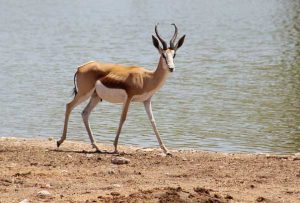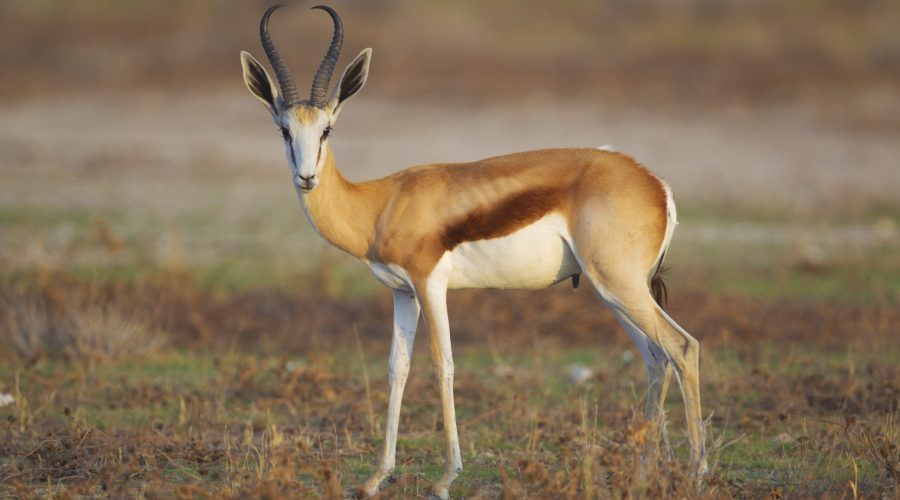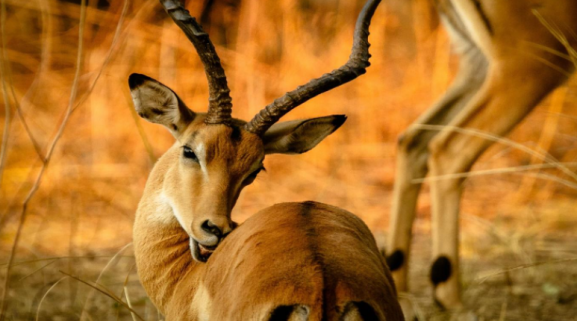Biltong Hunting South Africa: The Springbok
When it comes to affordable biltong hunting, the Springbok is one of the most cost-effective bucks to hunt in South Africa. Here are some fascinating facts about this animal. The Springbok (Antidorcas marsupialis) is a small antelope found in South Africa, they are also the national animal of South Africa, family of the Bovidae, and sub-family of the Antilopinae.The name is derived from the Afrikaans words for “jump” and “antelope”, with the first recorded use of the name dating back to 1775. Moving around at high speeds, they can reach a top speed of 88 km per hour and are known to leap up to 2 metres high in the air.
Their striking body colour renders them easily recognizable, reddish-brown with a pale underside, they have a distinctive dark brown stripe on each of their flanks that separates the colour of their upper parts from their underside.They have a white head, with a dark brown stripe running from each eye to their upper lip with long, narrow, pointed ears. Both the male and the female have ringed curved, black horns, but the horns of the ram are thicker and rougher. SIZE: Springbok rams may weigh up to 50 Kg, and ewes only up to 37 Kg.
Where Springbok Can Be Found
Countries: Angola, Botswana, Namibia, South Africa in the Desert, Shrublands, Grassland and Tropical savanna. The Springbok is native to South and Southwestern Africa, particularly in protected game reserves and on private farms.With the Springbok being the most abundant antelope, they are widespread across Namibia, adapted to dry barren areas and open grass plains; they are therefore especially found in the Free State, Northwest Province and in the Karoo right up to the west coast.
Habits and Lifestyle
Mainly active during dusk and dawn, Springbok feed throughout the day in cold weather, and sometimes at night when it is very hot. In summer, springbok sleep under bushes in the shade, and will bed down out in the open when temperatures are cooler. When excited or frightened, they make high-pitched snorts, performing a number of vertical stiff-legged jumps, called “pronking.” These leaps are supposed to distract predators like lions, Leopards, Cheetahs and Hyenas.
Mating Habits
Springboks are polygynous, one male mating with multiple females. During the mating season, only rams establish territories for mating opportunities, marking them by urinating and creating large piles of dung. The Ewes live in a herd with their Lambs and just a few dominant males, which prefer to live in the solitude of their territories.There are frequent fights between males from neighbouring territories who make attempts to access the females.

The reproduction season is during the dry season, females start to breed when they are one year old and will reproduce every year, some even twice, while the males are only reproductively mature at the age of 2. The gestation period lasts between 5-6 months, the ewe will birth 1 lamb, which stays hidden in the long grass for the first two days before joining the nursery herd with its mother.Young Springbok are weaned at about four months and ewes become sexually mature at the age of seven months. The females remain with the herd while young males join a herd of bachelor animals.
Diet and Nutrition – What do Springboks eat?
Springboks are herbivores, they eat flowers, grass and leaves and can go without drinking-water for years as they get enough moisture from the succulent leaves and moisture-rich tubers and roots.They accomplish this by selecting flowers, seeds, and leaves of shrubs before dawn when the food items are most succulent.
Population Threats
Springboks are hunted as a game in Botswana, Namibia and South Africa, for their meat, beautiful coats, horns, and as trophies. Due to being very common, as well as easy to maintain where farms have very low rainfall, Springbok are affordable to hunt.
Population number
The Springbok has a Life Expectancy of 10 years in the wild, with the total springbok population size in southern Africa being around 2,500,000, according to the IUCN Red List. This species is classified as Least Concern (LC) as their numbers today are ever increasing.
South African Game Reserves and National Parks the Springbok Can Be Found In:
Springboks can be seen in game reserves and national parks around South Africa at the, Aquila Game Reserve in the Western Cape, the Addo Elephant National Park and Sanbona Wildlife Reserve near Port Elizabeth, the Pilanesberg National Park in the Northwest Province, and the Kgalagadi TransFrontier Park in the Northern Cape. F2H is passionate about connecting South African farmers who offer affordable biltong hunting on their farms with South African hunters who are passionate about biltong hunting in South Africa. F2H (Farmer 2 Hunter) is a no commission, review web-based platform, that facilitates a mutually beneficial introduction of Farmers to like-minded Hunters.F2H bridging the gap between the Hunters and the Farmers. Please follow us on social media or visit us at www.f2h.co.za


